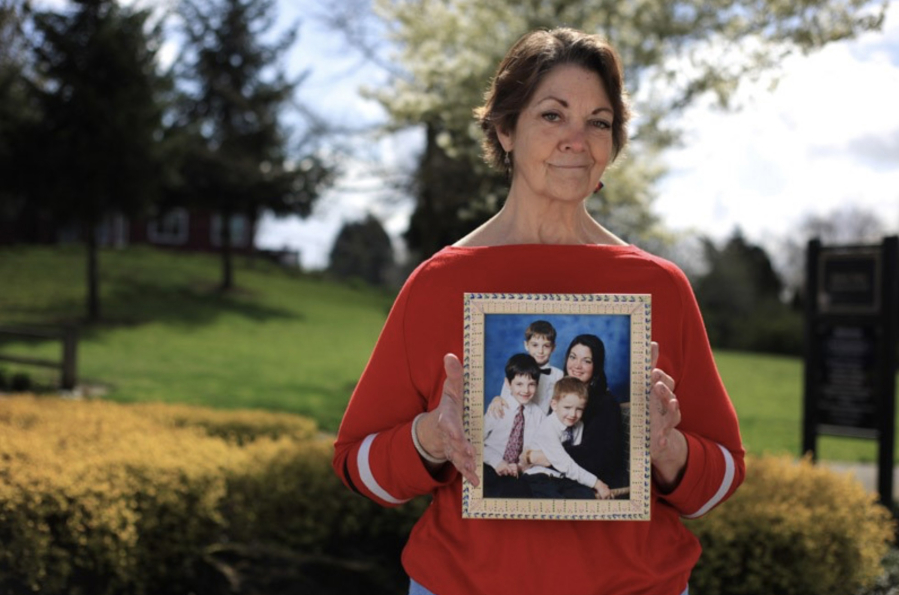Christina Keys was chasing the American dream while working in the technology field when her mother, Patricia, suffered a stroke, leaving her paralyzed on one side and in need of full-time care.
Keys left her job to care for her mother and soon was faced with the challenges that many family caregivers across the state face: the cost.
“We went from middle class to poverty in a year and a half,” said Keys.
A first-of-its kind insurance program called Washington Cares Fund aims to confront the current long-term care prices and relieve some of the financial burdens attached with caregiving.
Starting July 1, Washington employees will begin to see small deductions from their paychecks — about 58 cents per $100. The subtractions will steam into the insurance fund, which will allow caregivers to access up to $36,500 over a lifetime for professional care, medical equipment and home safety evaluations — things often paid out of pocket.
Washington residents who contribute, meet the requirements and need care for three daily living activities (like eating, bathing or walking) in Washington can access the benefit starting in 2026. The $36,500 will rise along with inflation.
“We’re one of the states who’s stepping up and making some type of change. I feel like with Washington stepping up, it is the beginning of many positive changes. We are at the forefront of families all across the U.S. watching our state and implementing things like WA Cares, too,” said Keys.
Safety net
Starting in July, those who make on average $50,000 a year can expect about $290 a year in deductions toward the fund.
The fund will cover medical equipment or other services needed to keep the elderly or residents with a disability in their homes longer — most of which is not covered by Medicare or health insurance. The benefits will also be available to pay family members to be caregivers. In Vancouver, there are roughly 20,000 unpaid family caregivers, according to We Care for WA Cares data.
The fund won’t cover the full extent of needs for some residents, but Keys said it will provide breathing room while navigating the offset of caregiving.
“I understand that $36,500 isn’t a lot, but it is enough when someone is tragically thrown into a situation where a family members has a stroke or they get diagnosed with cancer, dementia … that money would give them a cushion to ease into (finding care) and finding local resources,” said Keys.
Some residents may wonder why they are paying for something that doesn’t impact them. But supporters behind the fund point to statistics that predict about 70 percent of Washingtonians will eventually need long-term care.
“None of us think we’re going to become caregivers. But all of us at one point either are going to need a caregiver or be the ones providing care. Nobody gets a pass on it,” said Keys.
The number of people age 85 and older is projected to double in size within the next two decades. And people who develop Alzheimer’s, dementia or similar conditions are also expected to double.
“Private insurance is a great product for high earners, because it’s very expensive. If you can afford it, and you can afford to pay until the day you die or need care, that’s a good product for you. It’s not always a great product for the middle class,” said Ben Veghte, director for WA Cares Fund.
He explains that without private insurance, many long-term caregivers are paying out of pocket for dire services and goods needed to care for family members or paying high deductibles included with insurance.
Keys was a full-time caregiver for her mother for 10 years until her mother died. Keys calculated that between the loss of wages and the free at-home care she provided her mother, about $834,000 was contributed.
“My mother was thriving — a manufacturing engineer at Boeing for almost 30 years. She had a good pension. She had a good retirement plan. I was in tech for 20 years with a good salary, and still it wasn’t enough,” said Keys. “It wasn’t enough for what we needed to do to take care of my mother at home, and it wasn’t enough to cover that learning curve when you’re thrown into caregiving.”
History of the fund, controversy
The fund was passed in 2019, with plans to start in 2022.
But Gov. Jay Inslee delayed the start date to give the Legislature the ability to make changes amid pushback from both residents and lawmakers.
In November 2021, the fund escaped a lawsuit filed on behalf of three businesses and six individuals. The group alleged that WA Cares violated the Employee Retirement Income Security Act, the 14th Amendment and the Age Discrimination in Employment Act. The class action lawsuit was dismissed in 2022.
In 2021, legislators also threatened the caregiver insurance program with Initiative 1436. The petition desired to challenge the payroll tax associated with the fund but did not garner enough signatures to gain traction.
Workers’ main concerns centered around the deductions and that they may retire before they qualify for the program.
At the start of this year’s legislative session, the Washington Cares Fund Commission issued recommendations to address residents’ main concerns about the program, including more opting-out options, and offering other private insurance that supplements the fund. However, due to a packed session, those changes will be considered during the 2024 session.
Veghte said that there is an early access benefit for residents, if they paid three out of six years, they can access a portion of the funding. Workers who have contributed for at least 10 years with no breaks longer than five years can access the full benefit.
Residents close to retirement and born before 1968 can earn 10 percent of the full benefit for every year they pay in, according to Veghte.
In January, Inslee signed legislation that starts payroll deductions in July and allowed veterans, out-of-state residents who work in Washington and temporary nonimmigrant visa holders to opt out of the program.
Stepping stones
Vicki Bickford, a Vancouver resident, has always been a caregiver — a single mother of three, and a home care aide.
But now, Bickford anticipates that down the line she will need her own caregiver. She has aggressive arthritis that has spread to her knees, elbows, shoulder, and hands.
Bickford said WA Cares will be instrumental in getting care down the line.
“For family caregivers, (the fund) is going to be huge. It’s going to make all the difference. I am getting more and more disabled as I get older, and I’ve had to refinance my house, take on an extra $200 a month in debt on my mortgage so that I could modify my house because I can’t do stairs anymore,” said Bickford. “I’m continuing to work because I can’t stop.”
She said that she will work until she can no longer, but until then she will contribute to the WA Cares Fund. That way when she does retire and will need a caregiver at some point to help her with daily living activities like washing clothes, dishes and cooking meals, she will be able to afford it.
“Otherwise, without (WA Cares) I would have to go into poverty, absolute poverty and risk living in my car with my dog just so I could get state help,” she said.
Veghte said that the Washington Cares Fund isn’t the entire solution to the long-term care crisis. Residents will still need strong networks of friends and family, as well as having conversations about ideal long-term care.
“But WA Cares is going to be a really critical first step toward those conversations that we should all be having with our loved ones,” said Veghte.




